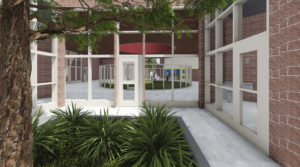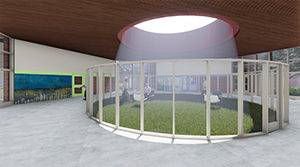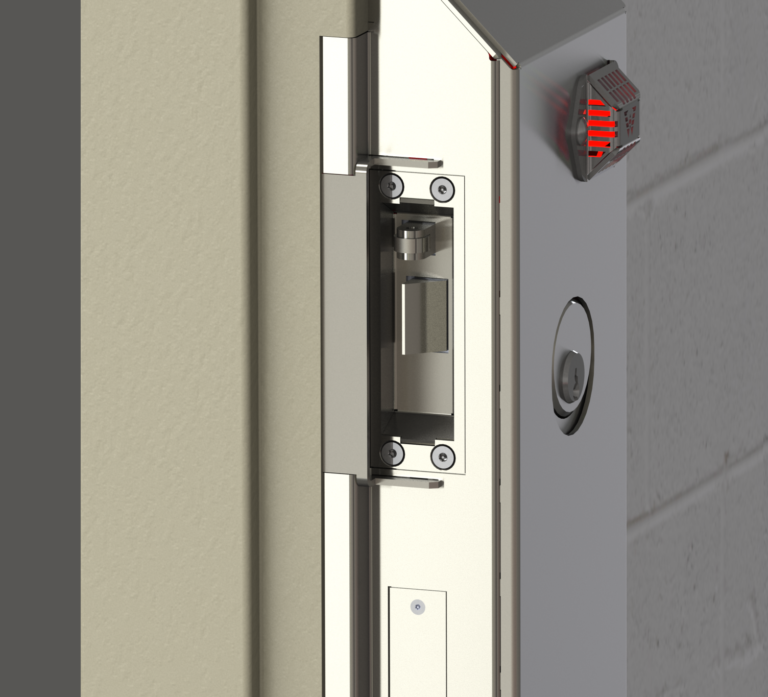Next-Generation Jails Break the Cycles of Incarceration

By Darrell Stelling
Last year, studies from the National Association of Counties indicated that 64 percent of jail inmates have mental health issues. Unfortunately, the design of existing jail facilities do not adequately house, let alone treat, those with mental illness. As a result, more counties and states are beginning to re-assess, redefine and rebuild detention facilities using a new design model that emphasizes next-generation jails.
Re-Defining Design Priorities
Jail facilities of the past were designed to incarcerate, and the medical and mental health programs had to fit within this environment. The latest trend reverses that perspective so that we first design the facilities specifically for medical and mental health patients, and the incarceration requirement becomes just a unique element of that model instead of the other way around.

Best practices and evidence-based design is going to play a big role in the design of medical and mental health facilities. There is not a lot of research yet on this, so some of the newer designs will play a big role in determining what works and what does not. Some of the specific design trends will incorporate natural light, outdoor views, calming colors and natural finishes, while still maintaining a secure environment. Additionally, some of the newer facilities that focus on mental health include internal courtyards with landscaping and views from sleeping rooms. As designers, we are also taking into account the special population types, assuring properly sized units meet the unique needs of individuals housed in these spaces.
Asking the Right Questions
The main difference in how we design is based on the types of questions we are asking. In the past, we saw more emphasis on designing jails based on maximizing the number of beds and security. We are taking a big departure from asking how many beds can fit into a space. Instead, we’re moving toward a more rehabilitative justice model, asking questions such as “What does this space needs to accomplish, and how might we reduce the recidivism rates by providing programming spaces to educate, socialize and address medical and mental health issues with the mission to rehabilitate first and integrate security around those parameters?” I see a big need coming in the future to design specific parts of or full facilities dedicated only to medical and mental health inmates.
Continuum of Care

The ultimate goal of the design of medical and mental health jail facilities is to provide an environment where the staff can effectively treat and restore to competency inmates who are vulnerable to recidivism. The programs in jail need to not only work closely with pretrial diversion programs, but also to maintain a continuum of care through effective discharge planning and follow up community re-entry programs. Breaking the cycles of incarceration requires a total partnership of courts, county programs, behavioral health, and the community to ensure successful re-entry into society.
A recent project with Sonoma County, Calif., indicates that the best way to get participation in the re-entry planning process is to combine in-custody incentives with strong support from a re-entry team. Sonoma County Behavioral Health (SCBH) have implemented intensive, full-service partnership programs, housing services, consumer-operated self-help services, enhanced collaboration with health centers, prevention and early intervention programs, and outreach services. The new Sonoma County Adult Detention and Behavioral Health Unit in Santa Rosa, Calif., will provide 72 beds for the treatment of inmates with behavioral health issues. It is designed with evidence-based best practices and will be part of the continuum of care to break the cycle of incarceration.
Facing the Challenges of Change
I was recently asked what the issues and obstacles are to making this kind of change in detention. I’m not sure it’s just one issue, especially when it comes to the evolution of addressing mental illness within the detention setting. We are always learning and educating ourselves, our clients, our communities and our law-making agencies across the country in this area of justice architecture. Many things need to occur to turn these places of detention into safety and healing for inmates and their families all while keeping communities safe. We are just now beginning to see evidence-based results of facilities and programs that combine to create healthier and rehabilitative environments for offenders. I’m hopeful that this is going to be a real game-changer in detention and correctional services resulting in positive impact for decades to come.
Darrell Stelling, AIA, is a principal at DLR Group and serves as the global sector leader for the firm’s Justice+Civic practice.






